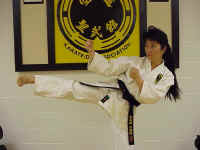Pressure
Presure exerted on solidsWhen a force acts on a solid object it can make it accelerate if it can make it change its state of motion. However,
sometimes a force acts on a solid object and that object cannot respond by
moving, instead the force creates pressure on that object. This can result
in the object being deformed in some way (having an indent appear on its
surface or being 'squashed'). Sometimes this is permanent, sometimes when the pressure is removed the object returns to its original shape. For an object that is able to recover its original shape, elastic So, we can think of pressure as being the result of a force acting on an object. You cannot tell the pressure effect that a force will have simply by its size. The contact area (only the area in contact! ... not the total surface area!) between the force and the object is also important). THE GENERAL EQUATION
This can be written as:
UNITSPressure is usually expressed in how much force (in newtons) is applied to one metre squared:
This unit can be expressed as a single word - the pascal (note the capital 'P' and small case 'a'). In exams and tests you will sometimes find it expressed in how much force (in newtons) is applied to one square centimetre:
A square metre is ten thousand square centimetres, therefore the pressure in pascal is always ten thousand times bigger than the pressure expressed in N/cm2 PERFORMING CALCULATIONSAlways lay your calculations out carefully.
Questions
|
Follow me...
|












